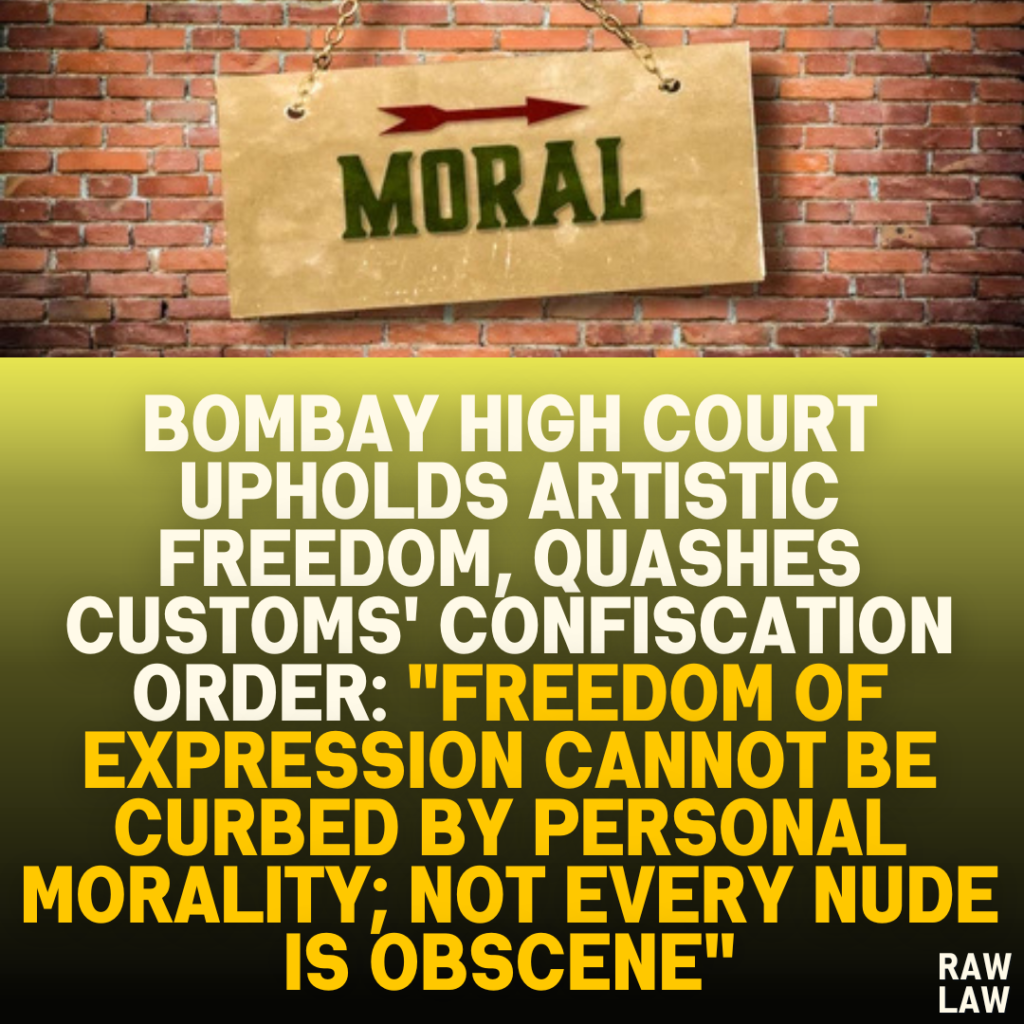Court’s Decision:
The Bombay High Court quashed the order issued by the Assistant Commissioner of Customs (ACC), which had confiscated and potentially directed the destruction of artworks by F.N. Souza and Akbar Padamsee, labeling them as “obscene.” The court held that the ACC’s interpretation of obscenity was perverse and unreasonably ignored relevant legal precedents, stating, “The Customs laws of India do not insist that Michelangelo’s David be fully clothed before he passes through our borders.” The court ordered the immediate release of the confiscated artworks.
Facts:
The petitioner, an Indian art company, imported seven artworks from renowned artists F.N. Souza and Akbar Padamsee, clearly declaring them as “nude drawings” to the customs authorities. Upon arrival, the ACC seized the artworks, declaring them obscene under Notification No.1/1964-Customs based solely on the ACC’s interpretation of nudity. Despite the petitioner’s submission of expert opinions and gallery certifications affirming the artworks’ artistic and non-obscene nature, the ACC upheld the confiscation, citing moral grounds without consulting art experts.
Issues:
- Whether the confiscated artworks can be legally deemed obscene and, therefore, subject to confiscation or destruction under the Customs Act.
- Whether the ACC’s personal interpretation of obscenity without expert consultation is a legally sound basis for the confiscation.
Petitioner’s Arguments:
The petitioner argued that the ACC’s order contravened legal principles governing obscenity, asserting that “every nude drawing cannot be deemed obscene.” They submitted evidence, including expert opinions from prominent art galleries, highlighting the cultural and artistic value of these artworks, which are internationally recognized and displayed in prestigious galleries. The petitioner emphasized that Indian law does not mandate censorship based on personal beliefs of public officials.
Respondent’s Arguments:
The respondents, represented by the ACC, contended that the artworks fell under obscene material as defined by the 1964 Notification. The ACC asserted that the artworks were unfit for public view due to their depiction of nudity and potential sexual themes, dismissing the petitioner’s expert certifications as irrelevant. They argued that the petitioner had accepted this obscenity classification by initially requesting permission to re-export the artworks.
Analysis of the Law:
The court analyzed the legal standards for obscenity, especially in light of evolving societal standards and landmark judgments that have moved beyond the outdated “Hicklin test.” The court cited Aveek Sarkar v. State of West Bengal and Raj Kapoor v. State, emphasizing that nudity alone does not equate to obscenity. Instead, contemporary standards, expert opinions, and the context of the artwork should guide such determinations.
Precedent Analysis:
The court reviewed significant Supreme Court judgments, including Ranjit D. Udheshi, S. Rangarajan v. P. Jagjivan Ram, and Indibily Creative v. State of West Bengal, which collectively underscore that art should not be censored based on the personal moral convictions of officials. These rulings uphold that “obscenity” requires explicit evidence of depravity, appealing solely to prurient interests, which the ACC failed to demonstrate.
Court’s Reasoning:
The court criticized the ACC’s “Ipse Dixit” approach, observing that the ACC ignored authoritative legal standards and expert opinions, relying solely on personal interpretations of obscenity. The court noted, “Personal opinions of public functionaries cannot cloud their judgment.” It further warned against the perils of public officials applying arbitrary moral standards to censor art, emphasizing the rule of law over the “rule of men.”
Conclusion:
The High Court held that the ACC’s actions were both arbitrary and legally unsustainable. The court quashed the confiscation order, stating, “The freedom to express through art is protected by our Constitution, and cannot be subjected to arbitrary and subjective moral standards of individual officials.”
Implications:
This judgment reiterates the judiciary’s commitment to safeguarding artistic expression from arbitrary censorship by public officials. It reinforces the importance of following legal standards over personal biases, particularly when dealing with art and literature, and sends a strong message against using personal morality as a basis for public adjudication.




Pingback: "Allahabad High Court Grants Urgent Stay on Election Tribunal Judgment – Emphasizes Need to Protect Petitioner's Electoral Rights and Prevent Possible Harm Pending Review" - Raw Law